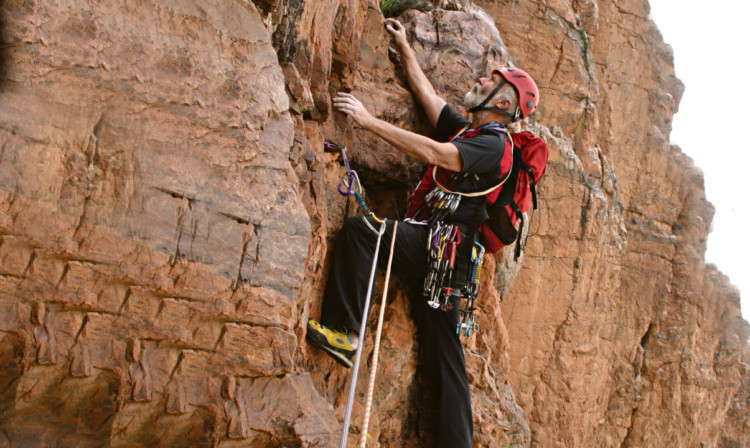
Being a carer is the toughest thing Sir Chris has ever done.
Mountaineer Sir Chris Bonington has conquered Everest and the north face of the Eiger, but his current challenge is his most difficult.
Sir Chris is main carer to wife Wendy, who is dying after recently being diagnosed with motor neuron disease.
The adventurer says looking after Wendy, his wife of more than 50 years,as she succumbs to the wasting disease is heartbreaking.
Speaking from his remote Cumbrian home, Sir Chris said: “Watching someone you love so dearly slowly fade is horrendous.
“It’s the hardest thing I’ve experienced in my life. It’s a truly terrible disease. But it’s also a very rare condition, so there’s not much incentive for big drug companies to research treatments.
“I’ll be working with the MND Association to help raise awareness and funds to research treatments into a disease that devastates families.”
Sir Chris turns 80 this year and is marking the milestone with a series of lectures. His only Scottish date is at Pitlochry next Saturday.
He said: “I have other commitments now and don’t have the time for as many talks as I once did, although I do enjoy them. I suppose this is my version of a ‘farewell tour’, if you like!”
Sir Chris’ epic climbing career began in the 1950s. His many expeditions include 19 to the Himalayas, four of which were to Everest, which he summited in 1985.
Along with Tom Patey, he was the first to climb the Old Man of Hoy in 1966, a feat repeated and shown live on TV the following year.
Sir Chris did once have a “proper” job he was on a management training scheme at multinational Unilever in the early ’60s. He lasted nine months.
He said: “My boss took me aside and told me I should decide what I want to do with my life. I went and climbed the north wall of the Eiger.
“On my return I found I was in demand on the lecture circuit and I also wrote my first book I realised I could make a living from climbing.”
But Sir Chris decries the modern “health and safety” culture he reckons stifles the sense of adventure in children.
The grandad of four said: “We’ve become so risk-averse as a society that we’re scared to do just about anything that has a whiff of danger.
“There are schools that don’t even allow youngsters to play rugby because it’s deemed too risky.
“How can we complain about childhood obesity or kids shutting themselves away on computers when we don’t allow them to do much else?
“I like to think certain types will always seek out adventure regardless, but so many aren’t allowed to explore that side of their nature.
“Life is about managing risk and we shouldn’t wrap kids in cotton wool. We mustn’t be afraid of the odd scrape or bruise we need to get out there and live.”
It’s a philosophy Sir Chris still abides by despite approaching his ninth decade, he still rock climbs whenever he can.
He said: “I look forward to the future and I’ve plenty more climbs in me. I’m not as I was in my prime I tend to stagger up rather than glide!
“All my old mates who’ve made it this far are still fit and climbing. I’ve certainly no plans to stop.”

Enjoy the convenience of having The Sunday Post delivered as a digital ePaper straight to your smartphone, tablet or computer.
Subscribe for only £5.49 a month and enjoy all the benefits of the printed paper as a digital replica.
Subscribe